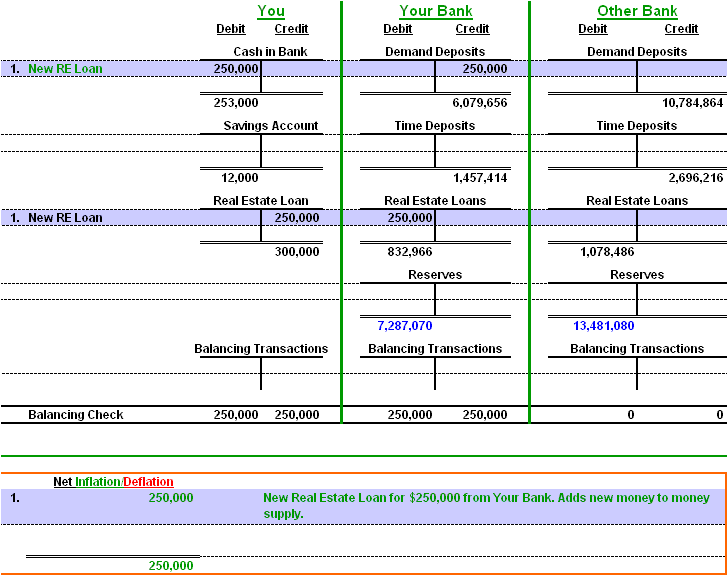The Free Market Center
The Free Market Center

Because of the increase in "market value" for the house for which you paid $120,000, your banker has offered to make you a real estate loan of $250,000. I will describe the entries for that transaction entity by entity (or column by column.)
Your Bank
You
Other Bank
Other Bank does not get involved in this transaction.
These simple entries show what happens when a bank "makes money." You commit to pay the bank $250,000 in the future, with interest (not recorded here), and they make an entry on their books that becomes money for you.
With this real estate loan you and your bank have created new money.
NOTE: I have added to this table a section at the bottom that keeps track of Net Inflation/Deflation.
Also, I have highlighted the latest entry ; as we progress through these examples this highlight should help you separate the latest entry from earlier entries.
© 2010—2020 The Free Market Center & James B. Berger. All rights reserved.
To contact Jim Berger, e-mail: